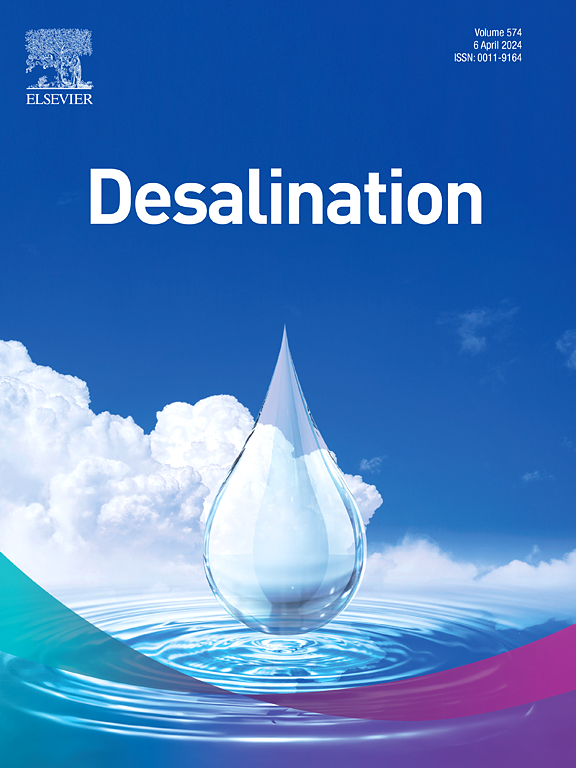Enhanced CO2 capture using amine-based extractants in liquid-liquid hollow fiber membrane contactors for direct ocean capture
IF 8.3
1区 工程技术
Q1 ENGINEERING, CHEMICAL
引用次数: 0
Abstract
One of the novel direct ocean capture (DOC) proposed to achieve negative carbon emissions is the liquid-liquid hollow fiber membrane contactor (LL-HFMC). The ocean, with a CO2 concentration approximately 150 times higher than that of the atmosphere, provides a more energy-efficient and cost-effective alternative to direct air capture (DAC). Despite its advantages, there is a lack of research on the effects of membranes and extractants in the DOC process. This study aims to optimize extractants for LL-HFMC in the DOC process through a systematic evaluation of amine-based extractants. The performance of monoethanolamine (MEA), ethylenediamine (EDA), diethylenetriamine (DETA), and triethylenetetramine (TETA) were compared alongside sodium hydroxide (NaOH), a benchmark extractant in LL-HFMC processes. Polypropylene hollow fiber membranes were used as the contactor medium. Among the extractants, DETA exhibited the highest CO2 capture efficiency. In addition, the effects of concentration and the flow rates (seawater and extractant) using DETA on system performance were investigated. These findings underscore the importance of material and process optimization, reaffirming that DOC – leveraging its inherently higher CO2 concentration – offers a more economical and scalable carbon capture medium than DAC. This study provides valuable insights into enhancing DOC efficiency and advancing carbon capture methodologies.

在液-液中空纤维膜接触器中使用胺基萃取剂进行直接海洋捕集
液-液中空纤维膜接触器(LL-HFMC)是实现负碳排放的新型直接海洋捕集(DOC)技术之一。海洋的二氧化碳浓度大约是大气的150倍,它提供了一种比直接空气捕获(DAC)更节能、更经济的替代方案。尽管有其优点,但对膜和萃取剂在DOC工艺中的作用研究较少。本研究旨在通过对胺基萃取剂的系统评价,优化LL-HFMC在DOC工艺中的萃取剂。以LL-HFMC工艺为基准,比较了单乙醇胺(MEA)、乙二胺(EDA)、二乙三胺(DETA)和三乙四胺(TETA)的萃取性能。采用聚丙烯中空纤维膜作为接触介质。萃取剂中,DETA的CO2捕集效率最高。此外,还考察了DETA的浓度和流量(海水和萃取剂)对系统性能的影响。这些发现强调了材料和工艺优化的重要性,重申了DOC利用其固有的更高的二氧化碳浓度,提供了比DAC更经济、更可扩展的碳捕获介质。该研究为提高DOC效率和推进碳捕获方法提供了有价值的见解。
本文章由计算机程序翻译,如有差异,请以英文原文为准。
求助全文
约1分钟内获得全文
求助全文
来源期刊

Desalination
工程技术-工程:化工
CiteScore
14.60
自引率
20.20%
发文量
619
审稿时长
41 days
期刊介绍:
Desalination is a scholarly journal that focuses on the field of desalination materials, processes, and associated technologies. It encompasses a wide range of disciplines and aims to publish exceptional papers in this area.
The journal invites submissions that explicitly revolve around water desalting and its applications to various sources such as seawater, groundwater, and wastewater. It particularly encourages research on diverse desalination methods including thermal, membrane, sorption, and hybrid processes.
By providing a platform for innovative studies, Desalination aims to advance the understanding and development of desalination technologies, promoting sustainable solutions for water scarcity challenges.
 求助内容:
求助内容: 应助结果提醒方式:
应助结果提醒方式:


